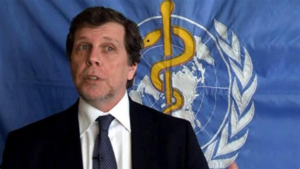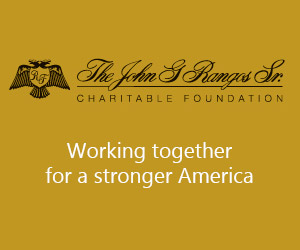- The Brothers Gerazounis: Engineering the Lifeblood of Buildings
- The Hellenic Initiative Summer Youth Academy Empowers Underprivileged Children Through Sports
- CAPTAIN MARIANTHI KASDAGLI: Charting her own course at sea
- Oscar nominee Lorraine Bracco of ‘Goodfellas’ is having ‘More Fun’ than ever before
- Voice And Vision: Grigoris Maninakis, 50 Years Of Greek Music In America
A safe and its riches: A century-old mystery
Dr. Agis Tsouros, who discovered it at the age of eight, talks to NEO
By Kelly Fanarioti
Influenced by childrens’ fairy tales with hidden treasures, and motivated by his intrinsic curiosity for everything, the eight-year-old Agis was enchanted by the view of the safe he found in the old mansion bought by his parents in Chroussa, Syros in 1962.

Dr. Agis Tsouros
He spent the whole day and night in the small stone house where it was located, trying to open it, but in vain.
The years passed, Agis grew up, studied Medicine at the University of Athens, and then went to Britain for postgraduate studies. His career has been spectacular: he became Director of the Division of Policy and Governance for Health and Wellbeing at the WHO Regional Office for Europe.
But he still wanted to open the safe.
”I wanted to open it, to find the treasure, and to bring the silence of the forgotten hiding place to an end. Endless summers I felt the discovery fever and tried to open it by using improvised ways. Unconquered, the safe kept me interested, as if it were telling me ‘Stay – do not give up.’ Half a century went by. The safe was there as I had left it, as if it were waiting for me. And five years ago, I felt that the time had come to open it”.
When the locksmith who opened it, kneeling in front of it, loosening up the steel door, he cried out loud–“It’s full!”–Agis Tsouros felt, as he confesses, very thrilled and justified.
“The safe had not tricked me. At that moment, I had no idea that the safe belonged to a very prominent and rich family of Syros in the 19th century. It was a treasure of a different kind: enigmatic, unusual and eccentric. The safe presented itself with a mixture of heterogeneous objects that looked like the dispersed pieces of a puzzle I once again was required to solve. The findings tell the story of one of the most important families of Syros in the 19th and early 20th centuries: the family of Athanasios Ladopoulos and Olga Vafiadaki, with significant merchant, banking, manufacturing and shipowning activities and important local and national political profiles.”

There is no doubt that one of the most notable documents found in the safe is the manufacturer’s instructions for opening and closing the safe with the secret combination, which was no other than the old name of the island: S.Y.R.A.
Rare documents, personal correspondence, amateur photographs, well-travelled postcards, guns, ancient coins, medals and a wide variety of personal objects offer a guided tour into a sometimes very personal treasure of another era.
Olga Vafiadaki, daughter of Dimitrios Vafiadakis (Mayor of Ermoupolis, during whose term the majestic town hall was built), and Athanasios Ladopoulos got married in the late 1800s. Athanasios was the son of Elpidoforos Ladopoulos, merchant and banker, from the northern province of Macedonia and whose siblings were Emmanouil, Aristotelis, Konstantinos, Maria, Anastasia, Eleni and Ifigenia. In 1895, together with his brothers, they created a textile factory in Ermoupolis called Ladopoulos Brothers, and he was the director.

During that period, the factory was considered one of the most representative of its kind. In fact, it was not accidental that the newspaper Helios in 1904 described it as “the most advanced of the textile factories of the East”. And in 1900, Olga bought the house in Chroussa, where Agis Tsouros discovered the safe.
Athanasios and Olga had four children: Elpidoforos (Bibis), Smaragda, Anna and Dimitris. Around 1908, Olga and Athanasios split up, and Athanasios died young in 1915. Olga and her children continued to spend time at their house in Chroussa, where Konstantinos, Athanasios’s brother, also seemed to have spent time.

”During the 1910s and early 1920s, Olga lived mainly in Athens and abroad. Bibis lived almost permanently abroad, and together with his uncle Konstantinos, they are an almost permanent presence in the photographs of the travel adventures of the family. It seems that the safe was locked for the last time after 1926, although members of the family continued visiting Chroussa for many years afterwards. The house of Chroussa was inhabited by Smaragda, who was married to a doctor called Anargirou. My family bought the house from Smaragda Anargirou in 1960,” Agis Tsouros explains.
The various and numerous findings of the safe cover the period from 1860 until the early 1900s, and they relate to the family of Olga Vafiadaki and her father Dimitrios, the family of Athanasios Ladopoulos from his father Elpidoforos, the family of Athanasios and their children, especially Bibis and his uncle Konstantinos.
The oldest documents in the safe concern Olga Vafiadaki’s father Dimitrios and his wife Smaragda. They are about the purchase of houses and land in some of the most prestigious locations of Ermoupolis such as Agios Nikolaos and Vaporia. The eight registered shares of the Hellenic Steamship Company (the first of its kind founded in Greece) each had a face value of 500 drachmas, belonged to family members and are especially well-designed documents.

Inside the safe there was a collection of coins from ancient Greece–Athens, Amphipolis and Peloponnese–the Ptolemaic kings, several Roman emperors, including Vespasianus, Diocletianus and Septimius Severus, as well as Byzantine emperors Justinian and Leo IV. In addition, there were several more recent silver Greek and European coins, mainly from the 19th century. There were also impressive Greek military medals and a silver and a bronze commemorative medal from the 1889 Exposition Universelle de Paris.
According to Dr. Tsouros, an unexpected discovery in the safe was a wooden box with 50 negatives of photos, and two albums containing about 10 postcards, some written and some not.
”The photos show beautifully-dressed women and elegant men posing with luxury cars and magnificent landscapes in the lakes and mountains of Switzerland. And of course, there were some truly unique photos of Chroussa and the members of the family relaxing in the shade of trees in the garden of the house or the neighbouring estate of Dimitrios Vafiadakis. The amateur photographs offer us a public but also a private glimpse of the family tastes and their personal impression of things near and far.”

The exhibition was first held in 2018 in Hermoupolis on the island of Syros, and a year later it was held at the Cultural Centre of the National Bank of Greece in Thessaloniki.
There was a more than enthusiastic response to the exhibition in both cities, Dr Tsouros said, and several visitors suggested that this story should be turned into a book and even made into a movie.
Presently the exhibition is being held at the Cyclades Gallery for the second time in Hermoupolis, until the end of 2021 and next year in Athens. Visitors on Syros will have the opportunity to listen to Dr. Tsouros telling this amazing story and how his childhood dream turned into reality.
Talking with Dr. Tsouros, I could not help but ask him his views about the pandemic which has killed more than 6 million people globally. As a leading expert with world-wide recognition, Dr Tsouros pointed out that the Covid -19 pandemic could be considered as a dress rehearsal of the many threats to the health and wellbeing humanity will be facing in the future, which are mainly related to climate change.

”We should not forget that the pandemic showed how fragile our societies are and how the most socially and economically vulnerable people paid the worst price. We must invest in modern public health systems in the same way we invest in the defence of our country purchasing expensive weapons even if they may never be needed. A viable and healthy tomorrow for all of us requires strong political will, good preparedness and response systems, anticipatory and visionary policies and emphasis on social solidarity and equity.”











0 comments